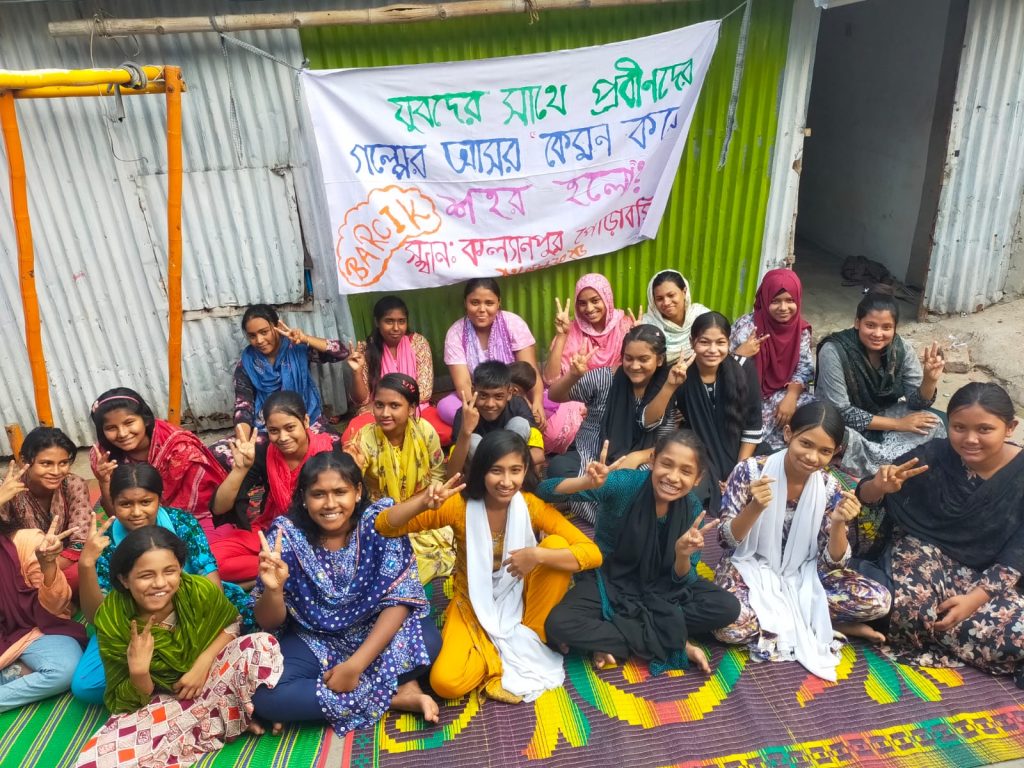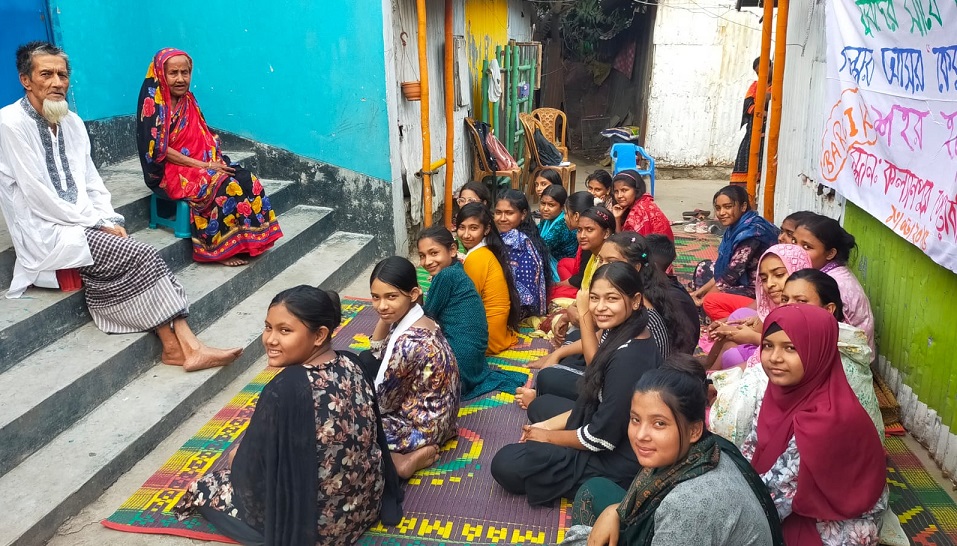By Zahangir Alam, from Dhaka
BARCIK recently organized a story-sharing session with adolescents and elderly residents at the Kallyanpur slum in Dhaka with the objective to to bridge generations and preserve urban memory. The theme of the event was “How the City Became a City.”

Elderly participant Jahanara Begum shared her experiences of migrating to Dhaka in the late 1970s due to poverty. She recalled settling in the Tejgaon railway slum, where the area was lush with trees and dirt roads. She worked at a local children’s school and described how, during her childhood in the village, she wrote on banana and palm leaves using homemade ink. Back then, Dhaka had no tall buildings, and people used kerosene lamps for lighting. Goods were cheaper, but incomes were low, making them inaccessible for many.
Another elderly resident, Md. Kanchan, reflected on the Dhaka of 1965, when the city’s population was around 7.5 million. He explained the origins of names like Kalabagan, Kathalbagan, and Dhanmondi derived from the crops once cultivated there. He described the limited urban infrastructure, such as cemented roads, few buildings, and basic public transport. Water was supplied from three major tanks in Lalmatia, Fakirapool, and Mohakhali, and the Buriganga River was so clear one could see coins at the bottom. He also shared memories of how sanitation systems worked and how the Kallyanpur area once had large open drains.

The youth participants expressed great interest, asking questions and gaining new insights about Dhaka’s past. The interactive session offered them a unique learning experience, which they said they would share with their families and peers in their day to day life.
